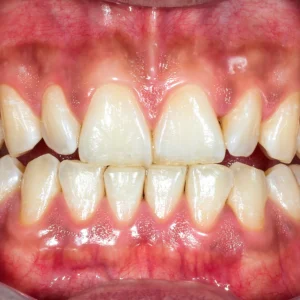Table of Contents
Dental health is a critical component of our overall well-being, and maintaining it involves regular checkups and preventive care. However, when cavities or tooth damage occur, dental fillings become essential in restoring both function and appearance to our teeth. Fillings are one of the most common dental procedures performed at Rim Point Dental, providing a simple yet effective way to repair decayed or damaged teeth. Understanding the purpose and value of dental fillings can help you make informed decisions about your oral health.
What Are Dental Fillings?
Let’s start with the basics: What are fillings? Dental fillings are materials used to restore the function, integrity, and shape of damaged teeth. The most common reason for needing a filling is tooth decay, but they can also be used to repair cracked or broken teeth, as well as teeth that have been worn down by habits like teeth grinding.
The process of getting a filling typically involves removing the decayed portion of the tooth and then filling the cavity with a durable material that will restore the tooth’s normal function. Modern fillings come in a variety of materials, including composite resin (tooth-colored), amalgam (silver), gold, and porcelain. Each material has its own set of advantages, and our dentist at Rim Point Dental will help you decide which is best suited for your specific needs.
When Do You Need a Filling?
The answer largely depends on the condition of your teeth. Cavities caused by tooth decay are the most common reason for needing a filling, but other signs may indicate that a filling is necessary. These include:
- Tooth Sensitivity: If you experience sensitivity when consuming hot, cold, or sugary foods and drinks, it may be a sign of a cavity.
- Visible Holes or Dark Spots: If you notice any visible holes, pits, or dark spots on your teeth, it’s a strong indication that decay has set in and a filling may be required.
- Toothache or Pain: Persistent toothache or pain when biting down could signal that decay has reached deeper layers of the tooth, potentially requiring a filling or even more advanced treatment.
- Cracked or Broken Teeth: A cracked or broken tooth that affects the tooth’s structure may also need a filling to restore its shape and function.
At Rim Point Dental, a thorough dental exam can help determine if you need fillings, and the earlier decay or damage is detected, the less invasive the treatment will be.
The Benefits of Dental Fillings
Dental fillings offer a range of benefits beyond simply repairing a damaged tooth. Here’s why fillings are an essential part of dental care:
1. Restoring Tooth Function
The primary purpose of a dental filling is to restore the normal function of a tooth. Whether it’s a cavity, a crack, or a chip, a filling helps maintain the structure and strength of your tooth, allowing you to bite and chew without discomfort or difficulty.
2. Preventing Further Decay
When a cavity is left untreated, it can continue to grow, eventually leading to more serious dental problems such as infections, abscesses, or even the need for a root canal. Dental fillings help to seal off the area, preventing bacteria from entering the tooth and causing further decay.
3. Aesthetics
Tooth-colored fillings, made from composite resin, blend seamlessly with your natural teeth, preserving the appearance of your smile. Unlike silver amalgam fillings, which are more noticeable, composite fillings provide a more aesthetically pleasing option.
4. Durability
Modern filling materials are designed to be strong and durable. With proper care, they can last for many years, ensuring that your tooth remains healthy and functional. Composite and amalgam fillings, in particular, are known for their longevity and strength.
5. Minimally Invasive
Dental fillings are a relatively quick and minimally invasive procedure. In most cases, the dentist can complete the filling in a single visit, and local anesthesia is used to ensure your comfort during the process. The procedure is straightforward, allowing you to resume your daily activities shortly after.
What Is the Difference Between Fillings and Sealants?
One common area of confusion is understanding what is the difference between fillings and sealants. While both serve important roles in dental care, they are used for different purposes.
1. Purpose
- Dental Fillings: Fillings are used to treat existing decay or damage in a tooth. They restore the tooth’s structure and function by filling in the area where decay has been removed. Fillings are a restorative treatment, meaning they are used to repair a tooth that has already been affected by decay or trauma.
- Sealants: Sealants, on the other hand, are a preventive measure. They are thin coatings applied to the chewing surfaces of the back teeth (molars) to protect them from decay. The grooves and pits of molars can trap food and bacteria, making them more susceptible to cavities. Sealants create a protective barrier that prevents decay from forming in these areas, especially in children and teenagers.
2. Application
- Dental Fillings: Fillings are applied after a tooth has developed a cavity or been damaged. The decayed portion of the tooth is removed, and the filling material is used to fill the space and restore the tooth’s shape.
- Sealants: Sealants are applied to healthy teeth to prevent cavities from forming in the first place. The procedure is quick and painless, involving the application of a clear or white liquid sealant to the tooth’s surface. Once the sealant hardens, it forms a protective shield over the tooth.
3. Target Group
- Dental Fillings: Fillings are suitable for patients of all ages who have cavities or damaged teeth that need restoration.
- Sealants: Sealants are most commonly applied to children and teenagers as a preventive measure against cavities. However, adults who are at a higher risk for decay, especially in their molars, may also benefit from sealants.
4. Longevity
- Dental Fillings: Fillings are designed to last for many years, particularly when made from durable materials such as composite resin or amalgam. With proper care, fillings can last anywhere from 5 to 15 years or more.
- Sealants: Sealants typically last between 5 and 10 years, though they may need to be reapplied over time, especially in younger patients whose teeth are still developing.
The Dental Filling Procedure at Rim Point Dental
At Rim Point Dental, we prioritize your comfort and care during every dental procedure. If you require a dental filling, here’s what you can expect during the treatment process:
Examination and Diagnosis
Our dentist will first examine the affected tooth and may take X-rays to determine the extent of the decay or damage. If a cavity or other issue is found, our dentist will recommend a filling to restore the tooth.
Local Anesthesia
To ensure your comfort, local anesthesia is administered to numb the area around the affected tooth. This ensures that you won’t feel any pain during the procedure.
Removal of Decay
Once the area is numb, our dentist will remove the decayed or damaged portion of the tooth using specialized tools. The goal is to remove all of the decay while preserving as much of the healthy tooth structure as possible.
Filling Placement
After the decay is removed, your dentist will clean the area to ensure it is free of bacteria and debris. The filling material is then placed into the cavity and shaped to match the contours of your tooth. Composite fillings are applied in layers and cured with a special light to harden them. Once the filling is in place, it is polished to ensure a smooth and natural appearance.
Aftercare
You may experience some sensitivity in the treated tooth for a few days after the filling, but this should subside quickly. Our dentist will provide you with aftercare instructions to ensure the filling heals properly and lasts for many years.
Conclusion: The Value of Dental Fillings in Preserving Oral Health
Dental fillings play a crucial role in maintaining oral health and preventing further damage to your teeth. By addressing cavities and damaged teeth early, fillings help restore both the function and appearance of your teeth, allowing you to smile, chew, and speak with confidence. Whether you’re dealing with decay or a cracked tooth, fillings offer a durable and effective solution.
At Rim Point Dental, we understand that every patient’s needs are unique. If you’re wondering if you need filings, or if you’re curious about the difference between fillings and sealants, our team is here to provide personalized care and advice. Regular dental checkups, preventive care, and prompt treatment can ensure your smile stays healthy and strong for years to come.
Ready to schedule your next appointment? Contact Rim Point Dental today to learn more about our dental services, including fillings, sealants, and preventive care!



